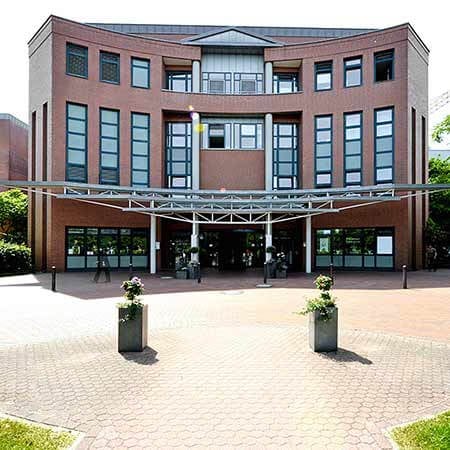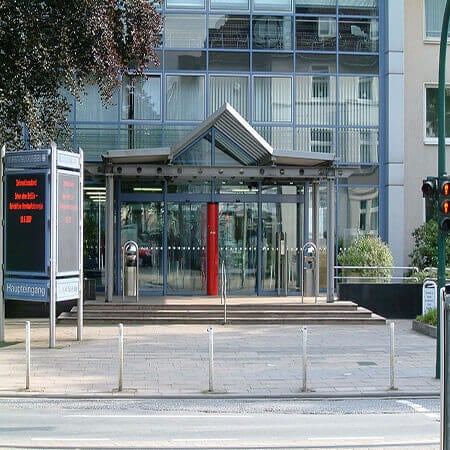Among the most dangerous congenital heart diseases, experts in medicine consider anomalous pulmonary venous connection one of the most serious one.
Content
- Overview
- Symptoms
- Treatment
- Where can I undergo anomalous pulmonary venous connection treatment abroad?
- The cost of treatment abroad with cardiac surgery
- How can I undergo anomalous pulmonary venous connection treatment abroad?
Overview
The word "anomalous" means "wrong." With this congenital heart disease, the pulmonary veins (there are four of them), which should flow into the left atrium, are connected to the right one. There are few types of their incorrect confluence.
There is a partial anomalous pulmonary venous connection. The formation of partial anomalous pulmonary venous connection occurs as a result of occlusion of a large branch of the common pulmonary vein, and then the persistence of the pulmonary-systemic venous connection on this side creates the etiological basis for partial anomalous pulmonary venous connection.
About 20% of patients with partial anomalous pulmonary venous connection have concomitant congenital heart diseases, for example, tetralogy of Fallot, atrial septal defect, transposition of the great arteries, and hypoplastic left heart syndrome.
The total anomalous pulmonary venous connection is different from partial. With this congenital heart disease, all four pulmonary veins are connected to one wide collector vessel. This collector of arterial blood oxidized in the lungs does not fuse with the left atrium, as it should, but connects to the body's venous system. Arterial blood, thus, bypassing the heart, enters the large veins and the right atrium. Through the interatrial defect, it reaches the left atrium, and then it starts its usual circulation to organs and tissues.
Thus, a significant part of the blood in the left half of the heart is venous, which means blood is poor with oxygen and goes through blood circulation over and over. Partially venous blood begins to circulate in the arteries, and the color of the child’s skin, especially the tips of the fingers and mucous membranes (lips, mouth) become bluish. With total anomalous pulmonary venous connection, cyanosis may be very pronounced, and it is usually noticeable soon after birth.
According to various studies, the incidence of total anomalous pulmonary venous connection ranges from 0.7 to 9.4%, which is about 2/3 of all cases of anomalous pulmonary venous connection.
This congenital heart disease in many cases leads to severe complications, including fainting, pulmonary hypertension, cyanosis, and shortness of breath. Analyzing the patient's ECG data, it can be concluded that the right cardiac chambers are hypertrophic, and pulmonary congestion is present. The severity of the patient's health condition depends on the degree of vascular obstruction and the anatomical peculiarities of the vein-atrial junction zone.
The child's health, and in some cases life, depend on the level of the interatrial communication. The smaller the interatrial communication is, the more difficult it is for arterial blood to get to the left half of the heart and start its way throughout the body. A child's heart can compensate for this congenital heart disease for some time. However, this time period can be very short. In most cases, the health condition of children with total anomalous pulmonary venous connection is critical from the very beginning of life. If treatment isn't carried out, children die during few days or months.
Depending on the severity of the disease and the associated symptoms, some heart defects can exist for years without significant physical limitations. Other heart defects may cause worsening of the health condition already in the first hours of life and require urgent treatment. The cooperation of pediatric cardiologists and pediatric cardiac surgeons is of great importance for making the early diagnosis of this pathology, followed by an individual treatment program and surgical interventions.
Symptoms
The clinical symptoms of anomalous pulmonary venous connection and its anatomical and hemodynamic features depend on the level of general pulmonary resistance, the degree of venous obstruction, the level of interatrial communication, and the functioning of the right ventricular myocardium.
Children with anomalous pulmonary venous connection have frequent recurrent pneumonia and acute respiratory infections, insufficient weight gain, shortness of breath, cyanosis, coughing, fatigue, physical development retardation, heart pain, and tachycardia. With severe pulmonary hypertension, a child may experience cyanosis and severe heart failure.
During auscultation of patients with anomalous pulmonary venous connection, the systolic heart murmur in the projection of the pulmonary artery and splitting of the II tone are noted. When conducting an electrocardiogram, a right ventricular volume overload and incomplete blockade of the right bundle branch may be detected. When analyzing the results of a chest X-ray, the extension of the right cardiac shadow and enlargement of the pulmonary artery may be determined.
Treatment
The results of surgery for the treatment of anomalous pulmonary venous connection are quite encouraging today. Such cardiac surgery is quite complicated, as it is performed on an open heart. During the intervention the pulmonary veins are sutured to the left atrium, and the opening in the atrial septum is closed. Thus, after the surgery, normal blood circulation is restored.
The method of surgical correction of anomalous pulmonary venous connection is determined according to the type of defect. Interatrial communications may be sutured or closed with an occluder. Children under the age of 3 months who are in critical health condition may undergo palliative closed surgery in order to decrease interatrial communication.
The general principles of surgery for treatment of total anomalous pulmonary venous connection include the creation of an anastomosis between the pulmonary veins and the left atrium, closure of the atrial defect, ligation of the pathological communication of the pulmonary veins with venous vessels. Sometimes in patients who have undergone such a surgical intervention, the sick sinus syndrome and pulmonary hypertension may develop, due to the incorrect formation of outflow tracts from the pulmonary veins.
Sometimes emergency medical services are required. PArtial correction of the defect with the help of sounding may be the first life-saving intervention that allows the main intervention to be somewhat delayed.
The long-term results of the surgery are quite good – after all, the main defect is eliminated. However, the patient should stay under the supervision of cardiologists because complications in the form of heart rhythm disturbances or narrowing of the pulmonary veins at the suture sites are possible against the background of heart growth.
It should be emphasized that children with this defect need immediate specialized care, which is rather possible today.
Where can I undergo anomalous pulmonary venous connection treatment abroad?
Medical tourism is becoming more and more popular these days, as medicine abroad often ensures a much better quality of cardiac surgery for anomalous pulmonary venous connection treatment.
The following hospitals show the best success rates in cardiac surgery:
- University Hospital Oldenburg, Germany
- University Hospital Essen, Germany
- Medipol Mega University Hospital Istanbul, Turkey
- University Hospital Ulm, Germany
- University Hospital Frankfurt am Main, Germany
You can find more information about the world’s leading and European hospitals and the services they provide on the Booking Health website.
The cost of treatment abroad with cardiac surgery
The prices in the world’s leading and European hospitals on the Booking Health website are relatively low. With Booking Health, you can undergo anomalous pulmonary venous connection treatment abroad at an affordable price.
The cost of treatment abroad varies, as the price depends on the hospital, the specifics of the disease, and the complexity of its treatment.
For example, the cost of treatment of total anomalous pulmonary venous connection in Germany starts at 31,770 EUR, while the cost of treatment of total anomalous pulmonary venous connection in Turkey starts at 22,909 EUR.
You might want to consider the prices of possible additional procedures and follow-up care. Therefore, the ultimate cost of treatment may differ from the initial price.
To find out the information on the overall cost of treatment abroad, you may contact us by leaving the request on the Booking Health website.
How can I undergo anomalous pulmonary venous connection treatment abroad?
It is not easy to self-organize any treatment abroad. It requires certain knowledge about the world’s leading and European hospitals. Thus, it is safer, easier, and less stressful to use the services of a medical tourism agency.
As the largest and most transparent medical tourism agency in the world, Booking Health has up-to-date information about the treatment of anomalous pulmonary venous connection in the best world’s and European hospitals. We provide comprehensive services, including selection of the right clinic taking into account patient’s wishes for treatment.
We want to help you and take on all the troubles. You can be free of unnecessary stress, while Booking Health takes care of all organizational issues regarding the treatment abroad. Our services are aimed at the safe and successful treatment of anomalous pulmonary venous connection in the world’s leading and European hospitals.
Medical tourism can be easy! All you need to do is to leave a request on the Booking Health website, and our manager will contact you shortly.
Authors: Dr. Vadim Zhiliuk, Dr. Sergey Pashchenko














